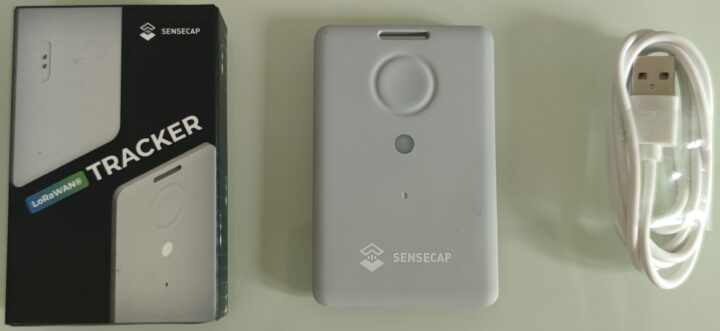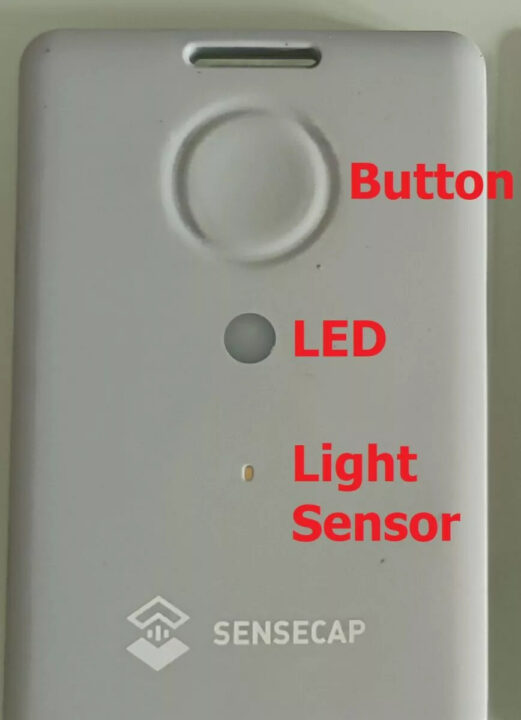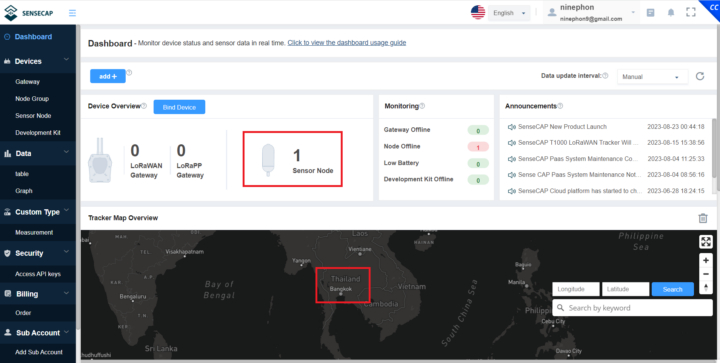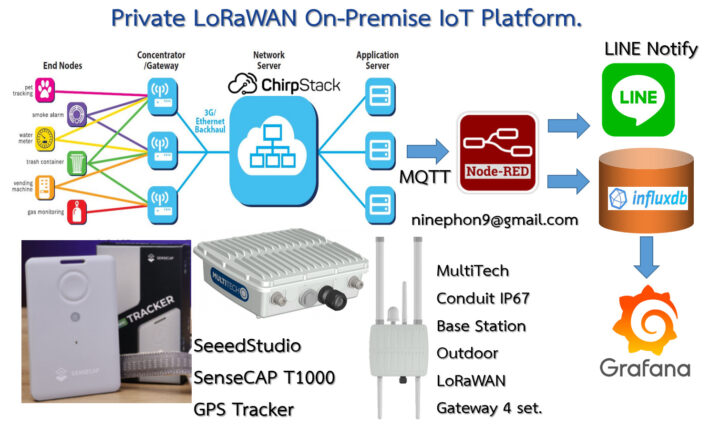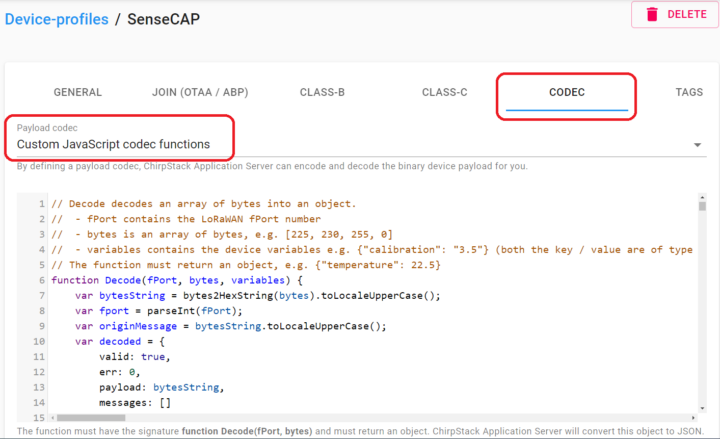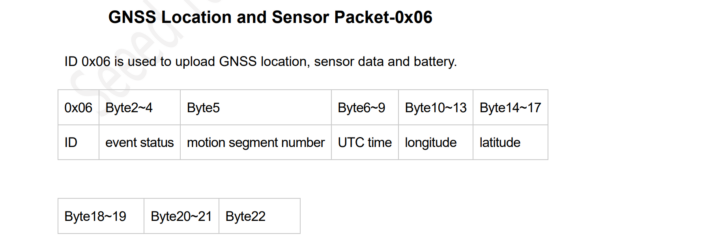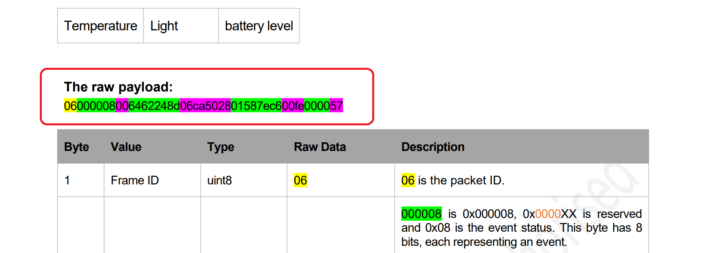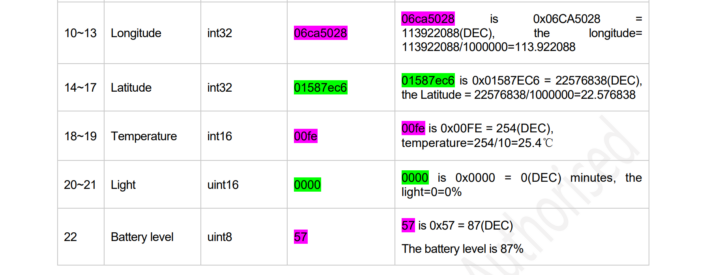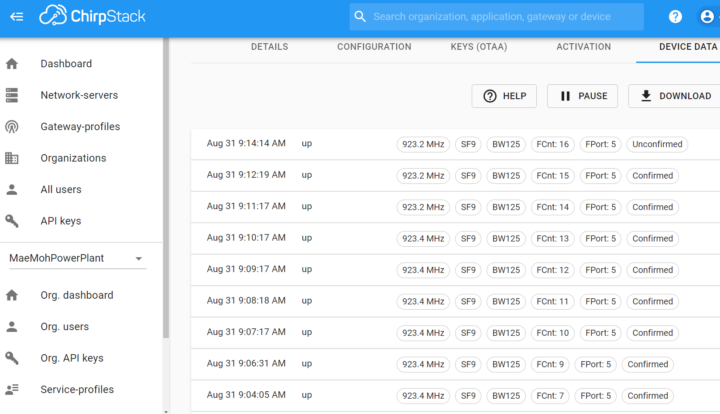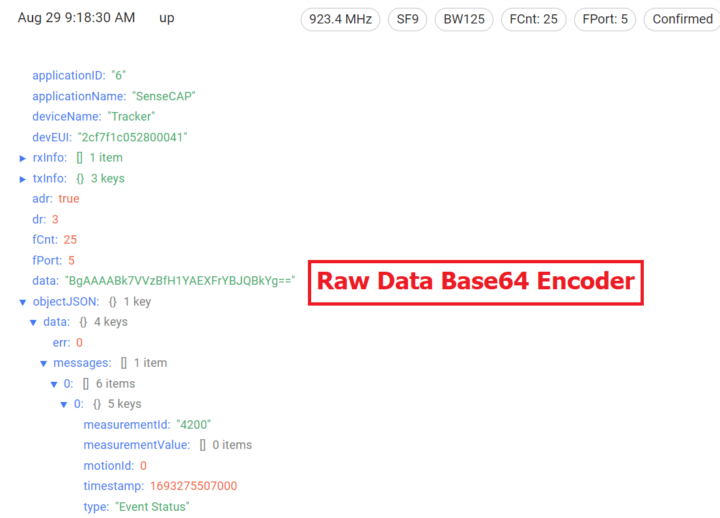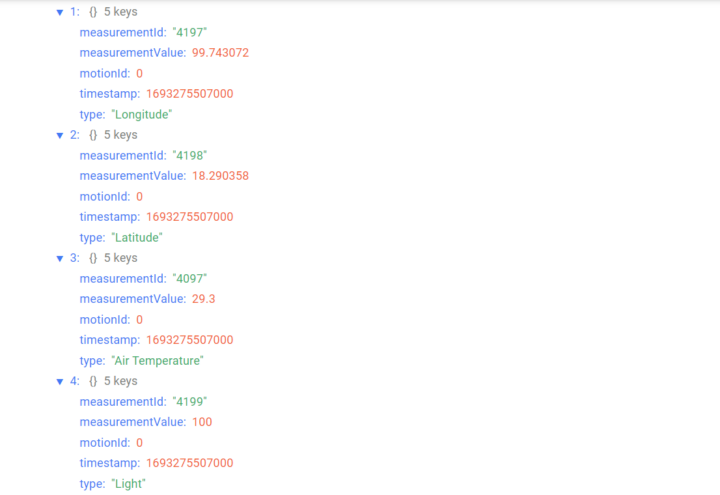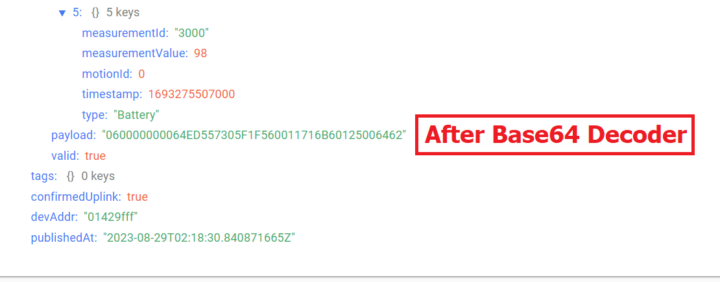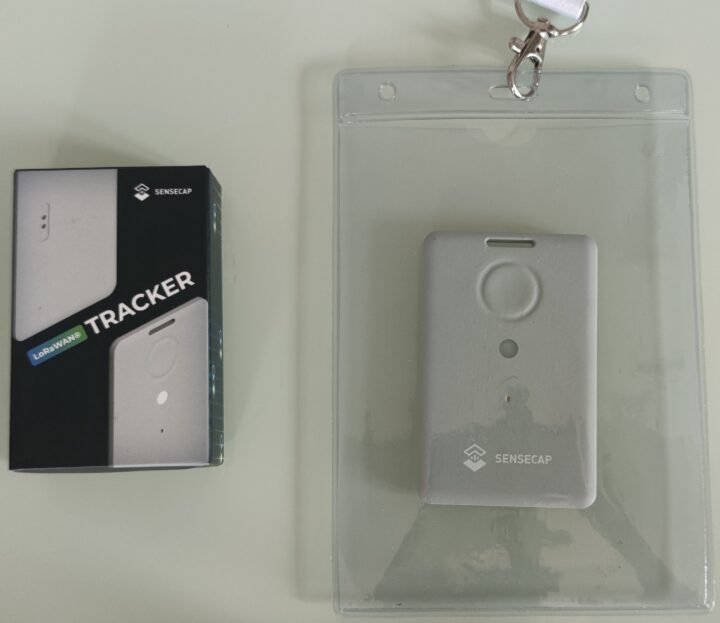SenseCAP T1000 is a credit-size GPS tracker using LoRaWAN low-power long-range connectivity. Smart Agriculture is one specific application that can leverage IoT and LoRaWAN to analyze and manage soil, crops, and water, but also to track the location of livestock.
This is an important aspect of farming, and we’ll use the SenseCAP T1000 LoRaWAN GPS tracker to track cattle in this article/review.
SenseCAP T1000 unboxing
The package contains the SenseCAP T1000 GPS Tracker device, which is about the size of a credit card, and a charging cable.
Smart cattle tracking with SenseCAP T1000 LoRaWAN tracker
Here are some of the benefits and features of Smart cattle tracking:
- Identify the location of the swarm in real-time
- Identify animals easily
- Increase efficiency and reduce human labor
- Secure your farm by using the tracker as an anti-theft device
- Weather change alerts
- Virtual fence to generate an alert when the animal leaves the designated area without actually building a fence around it.
The SenseCAP T1000 can help farmers monitor livestock’s whereabouts, temperature, and activity.
SenseCAP T1000 Configuration
We’ll first need to install the SenseCAP Mate app for Android or iOS, and then register before adding the SenseCAP T1000 device by scanning its QR code and configuring various settings as shown below.
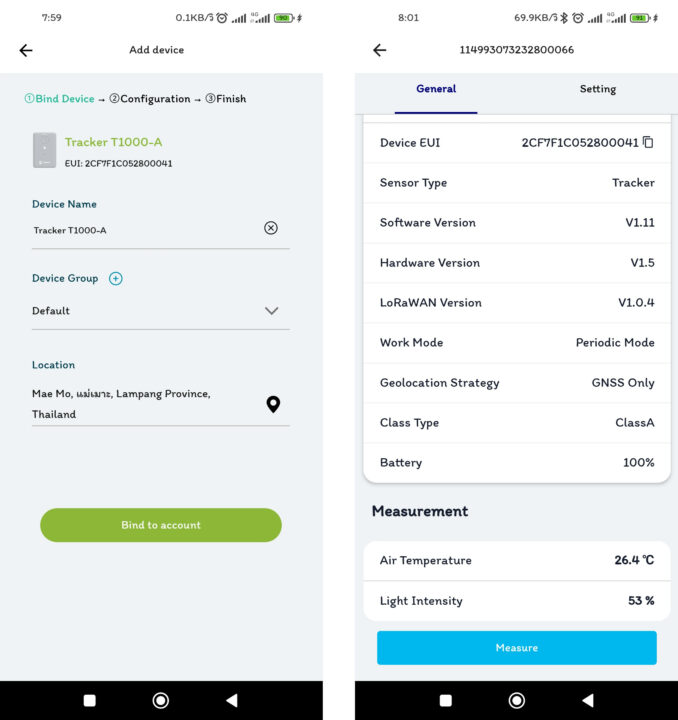
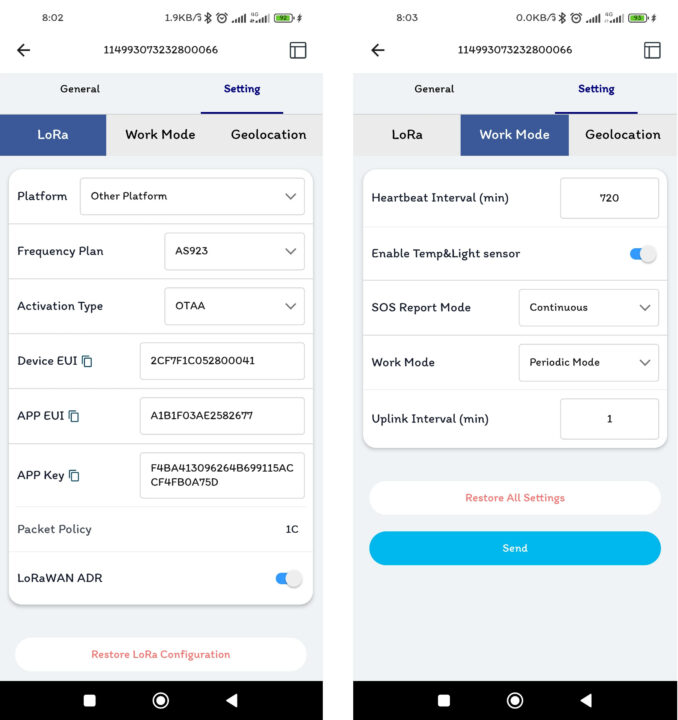
SenseCAP Portal
The SenseCAP Portal is Seeed Studio’s IoT cloud platform system to which we can sign in or register first, and then we can select “Global Station” to add a LoRaWAN Gateway device and connect it through the Internet to the cloud server.
Note: The reviewer does not have access to a Seeed Studio LoRaWAN Gateway and as such could not take advantage of the SenseCAP Portal cloud server but.. SenseCAP T1000 can still be used with other brands of LoRaWAN Gateway, including other Network Servers as well, and that’s the way we’ll proceed going forward.
SenseCAP T1000 with Private LoRaWAN Network
The reviewer installed four outdoor LoRaWAN Outdoor gateways (MultiTech Conduit gateways) to cover a large area and used the ChirpStack software to act as a LoRaWAN Network Server and an Application Server with various software packages such as Node-RED, InfluxDB, Grafana which we previously used with the RAKwireless WisGate Connect gateway.
We first had to add the SenseCAP T1000 device to the ChirpStack Network Server. In Device-profiles, CODEC section, select Custom JavaScript codec functions.
In the Payload Codec field, copy and paste the Javascript program that you’ll find on GitHub.
After the SenseCAP T1000 device successfully connects to the network server, it sends GPS coordinates and sensors’ data. It will do so every minute with the data found in the payload as Packet ID no. 6 as shown below.
ChirpStack will show the Displays Device data that has been confirmed.
Raw data encoded with Base64
Payload data description
Payload after going through a Base64 decoder
In order the get the data above follow the steps below:
- Turn on the device by pressing and holding the power button for about 3 seconds.
- The light will blink and the device connect to the LoRaWAN network.
- Place the SenseCAP T1000 device behind the cow’s ear. For convenience, we used a cow neck strap for this review.
We tested the solution with an actual cow near Huai Sai reservoir, in Mae Mo District, Lampang Province, in Thailand.
We tested it for about 30 minutes, and the SenseCAP T1000 can send uplink data every minute and the gateway stores it in an InfluxDB database.
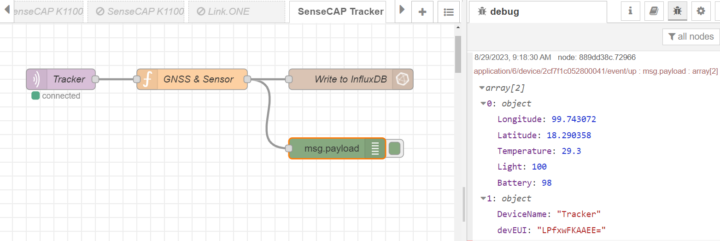
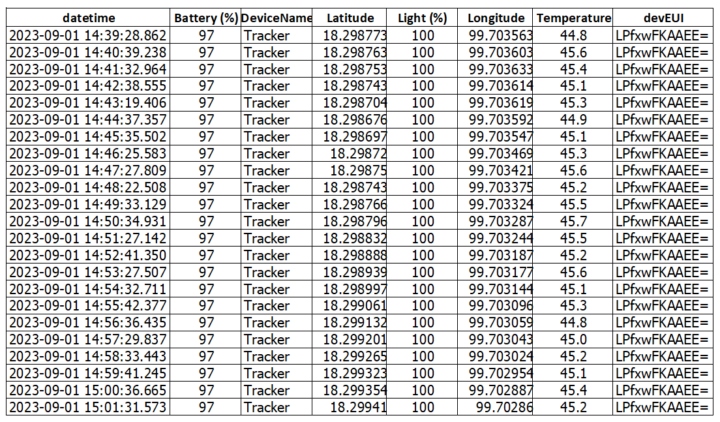
Here’s a short video showing the cattle including the (lucky) smart cow that got a SenseCAP T1000 LoRaWAN GPS tracker attached to its neck.
Conclusion
The SenseCAP T1000 GPS tracker works well to track assets outdoors using LoRaWAN low-power long-range wireless connectivity with up to one-meter accuracy, while the device can make use of WiFi and/or Bluetooth for indoor positioning.
However, the battery may be a limitation when tracking larger animals that live in open grasslands, such as herds of cattle, sheep, deer, horses, elephants, camels, and others as it can’t be used for a long period when updating the data every minute. If used outdoors as in the case of cattle tracking, the SenseCAP T1000 LoRaWAN tracker could be used with a LiPo battery in combination with a solar panel that’s about the same size as the SenseCAP T1000 device to automatically recharge it and extend the battery. An extra sensor to monitor the relative humidity would also be a plus.
We’d like to thank Seeed Studio for sending the SenseCAP T1000-A LoRaWAN GPS Tracker for review. The GPS tracker is currently offered on Kickstarter starting at $29 plus shipping. Deliveries are scheduled to start in October 2023, or next month once the crowdfunding campaign is over.
CNXSoft: This review is a translation – with some edits – of the original article on CNX Software Thailand by Ninephon Kongangkab, and edited by Suthinee Kerdkaew

Jean-Luc started CNX Software in 2010 as a part-time endeavor, before quitting his job as a software engineering manager, and starting to write daily news, and reviews full time later in 2011.
Support CNX Software! Donate via cryptocurrencies, become a Patron on Patreon, or purchase goods on Amazon or Aliexpress


